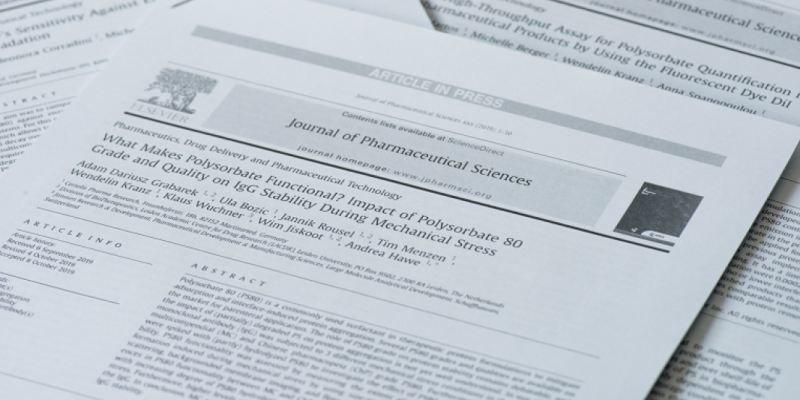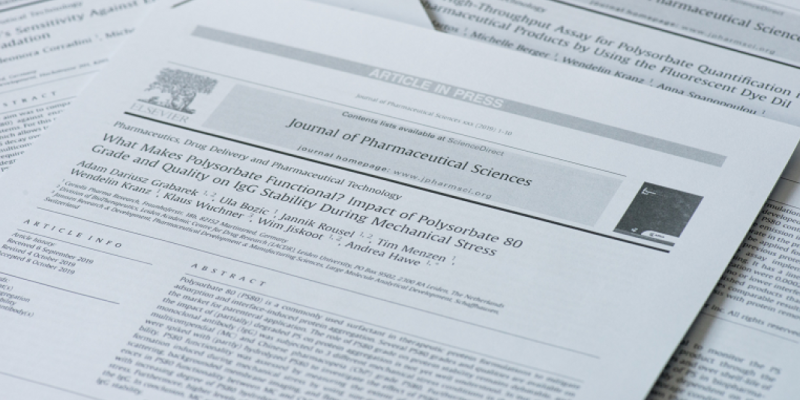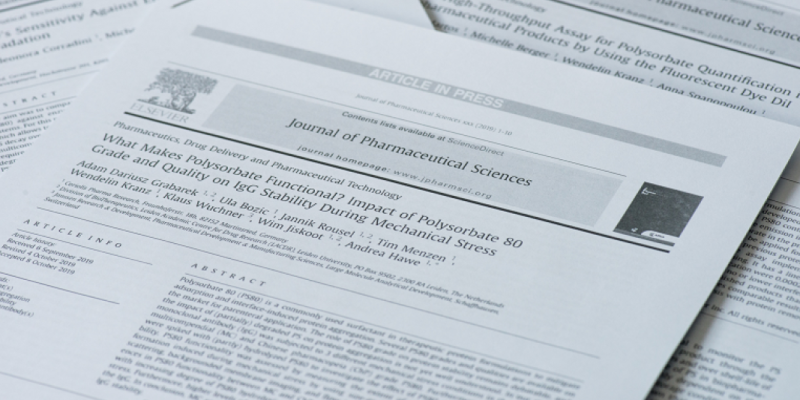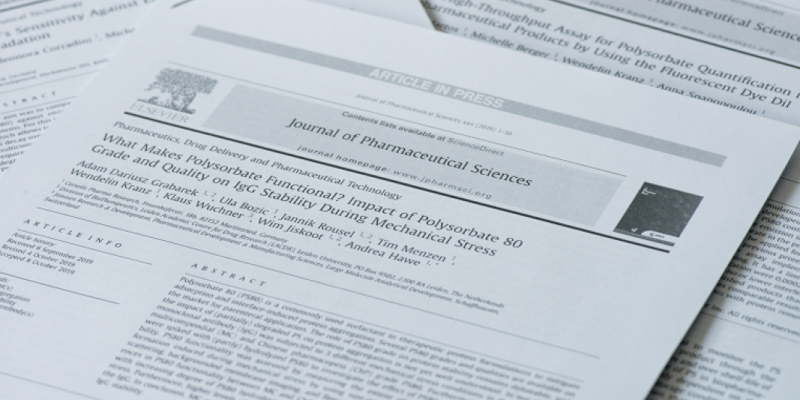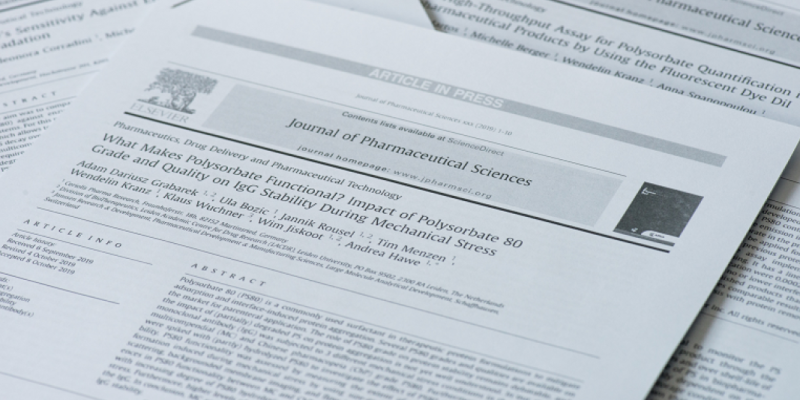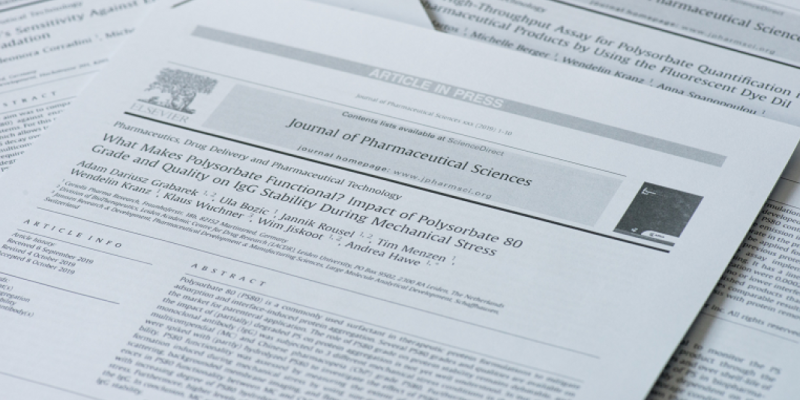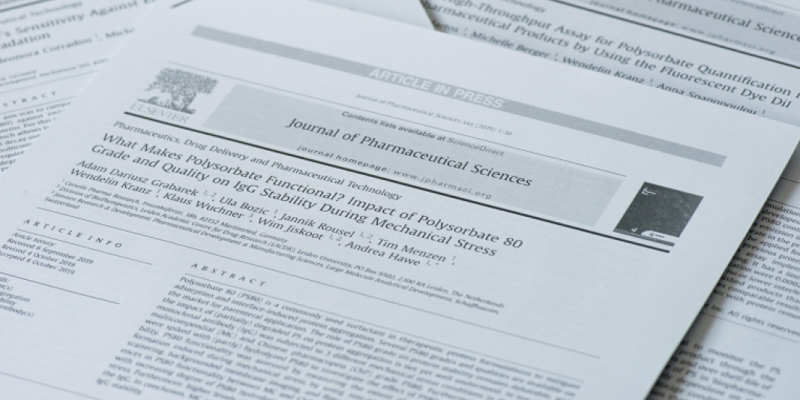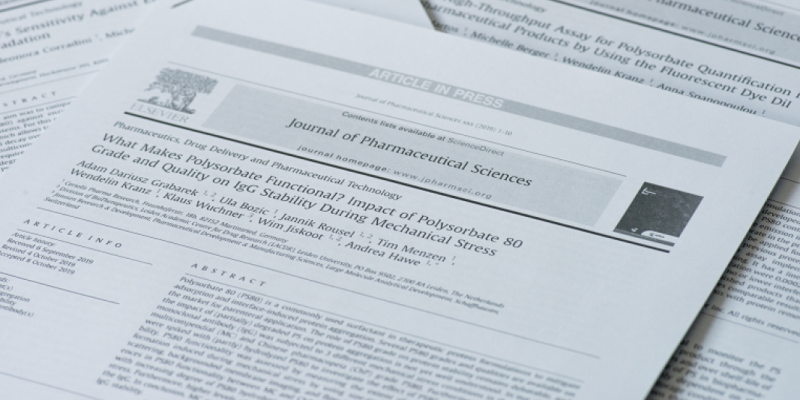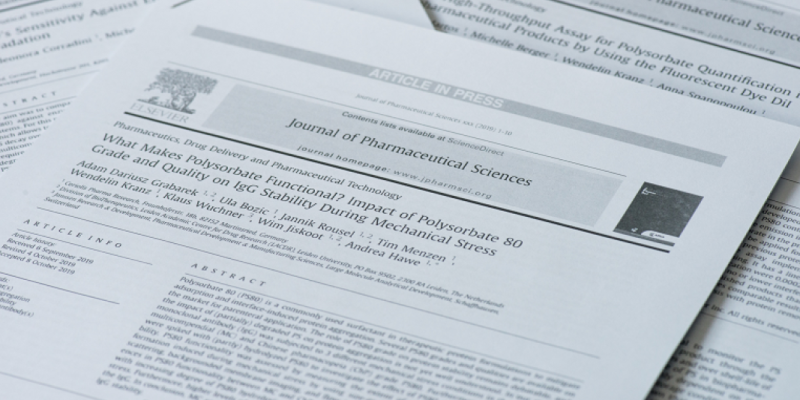Interaction of meso-tetrakis (4-N-methylpyridyl) porphyrin in its free base and as a Zn(II) derivative with large unilamellar phospholipid vesicles.
Eur Biophys J. 2013 Apr
Our aim was to investigate the interaction of the cationic meso-tetrakis (4-N-methylpyridyl) porphyrin, a photosensitizer used for photodynamic therapy, in its free base form (TMPyP) and complexed with Zn(II) (ZnTMPyP), with large unilamellar vesicles (LUVs), as a model for the gram-negative bacterial cell wall. Mixtures of the zwitterionic 1-palmitoyl-2-oleoyl-sn-glycero-3-phosphocholine (POPC) and anionic 1-palmitoyl-2-oleoyl-sn-glycero-3-phospho-(1'-rac-glycerol) (POPG) phospholipids, at different molar percentages, were used as LUVs. A significant increase of porphyrin affinity at higher POPG molar concentrations was observed from the binding constant values, K b, estimated by optical absorption and steady-state fluorescence. Besides, as demonstrated by time-resolved fluorescence, this affinity increase is also followed by a higher fraction of vesicle-bound porphyrin in the LUVs. Moreover, based on the K b values, we have observed a higher affinity of the ZnTMPyP to the POPG containing LUVs as compared to the TMPyP. Steady-state fluorescence quenching and zeta potential studies revealed that both porphyrins are possibly located at the LUVs Stern layer region. Therefore, the electrostatic attraction between the positively charged porphyrin peripheral groups and the negatively charged outer surface of the LUVs plays an important role in porphyrin association and localization. Our results have improved the understanding of the successful application of cationic porphyrins on the photo-inactivation of gram-negative bacteria. Since a higher accumulation of the ZnTMPyP in the bacterial cell wall would be expected, this porphyrin could be a more efficient therapeutic drug for this treatment.
Eur Biophys J. 2013 Apr
https://link.springer.com/article/10.1007%2Fs00249-012-0872-y


